12 start with N start with N
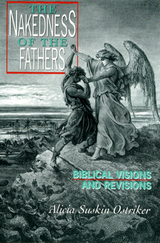
In her introduction, "Entering the Tents, " Ostriker defines the need to struggle against a tradition in which women have been silenced and disempowered - and to recover the female power buried beneath the surface of the biblical texts. In "The Garden, " she reinterprets the mythically complex stories of Creation. Then she considers the stories of "The Fathers, " from Abraham and Isaac to Moses, David, and Solomon - and their wives, mothers, and sisters. In "The Return of the Mothers, " she begins with a radical new interpretation of the book of Esther, includes a meditation on the silenced wife of Job and the idea of justice, and concludes with a fable on the death of God and a prayer to the Shekhinah, the feminine aspect of God. Ostriker refuses to dismiss the Bible as meaningless to women. Instead, in this angry, eloquent, visionary book, she attempts to recover what is genuinely sacred in these sacred texts.
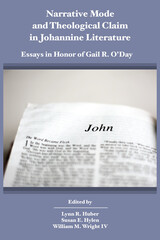
Exegesis that bears fruit both for the academy and the church
In this collection of essays and sermons on the Gospel of John and Revelation, friends, colleagues, and former students of Gail R. O’Day explore and extend the possibilities raised by her work in her groundbreaking study Revelation in the Fourth Gospel. The essays engage with both historical contextualization and literary analysis to identify the rhetorical features that ancient readers might have apprehended, while the sermons explore how the literary shape of the text can inform preaching through attention to the narrative modes of the text. Contributions from Yoshimi Azuma, Teresa Fry Brown, Patrick Gray, Lynn R. Huber, Susan E. Hylen, Karoline M. Lewis, Thomas G. Long, Veronice Miles, Vernon K. Robbins, Gilberto A. Ruiz, Ted A. Smith, and William M. Wright IV thematize the importance of narrative approaches and the diverse ways they can be employed.

Donna Laird examines Ezra and Nehemiah in the light of modern sociological theorist Pierre Bourdieu. How did this context of hardship, exile, and return change what Ezra and Nehemiah viewed as important? How did they define who was a part of their community, and who was an outsider? It goes on to explore how the books engaged readers at the time: how it addressed their changing circumstances, and how different groups gained and used social power, or the ability to influence society.
Features
- Chapters dedicated to penitential prayer and to the role of ritual
- Illustrations of how the writers used past traditions to justify dividing those who belong, the repatriates, from the local population
- Demonstration of how shifting strategies of discourse in the various sections of Ezra-Nehemiah reflect the changing political and social contexts for the community and the authors
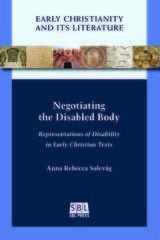
An intersectional study of New Testament and noncanonical literature
Anna Rebecca Solevåg explores how nonnormative bodies are presented in early Christian literature through the lens of disability studies. In a number of case studies, Solevåg shows how early Christians struggled to come to terms with issues relating to body, health, and dis/ability in the gospel stories, apocryphal narratives, Pauline letters, and patristic expositions. Solevåg uses the concepts of narrative prosthesis, gaze and stare, stigma, monster theory, and crip theory to examine early Christian material to reveal the multiple, polyphonous, contradictory ways in which nonnormative bodies appear.
Features:
- Case studies that reveal a variety of understandings, attitudes, medical frameworks, and taxonomies for how disabled bodies were interpreted
- A methodology that uses disability as an analytical tool that contributes insights about cultural categories, ideas of otherness, and social groups’ access to or lack of power
- An intersectional perspective drawing on feminist, gender, queer, race, class, and postcolonial studies
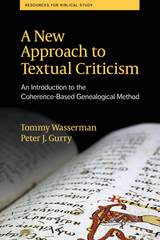
An essential introduction for scholars and students of New Testament Greek
With the publication of the widely used 28th edition of Nestle-Aland’s Novum Testamentum Graece and the 5th edition of the United Bible Society Greek New Testament, a computer-assisted method known as the Coherence-Based Genealogical Method (CBGM) was used for the first time to determine the most valuable witnesses and establish the initial text. This book offers the first full-length, student-friendly introduction to this important new method. After setting out the method’s history, separate chapters clarify its key concepts, including genealogical coherence, textual flow diagrams, and the global stemma. Examples from across the New Testament are used to show how the method works in practice. The result is an essential introduction that will be of interest to students, translators, commentators, and anyone else who studies the Greek New Testament.
Features
- A clear explanation of how and why the text of the Greek New Testament is changing
- Step-by-step guidance on how to use the CBGM in textual criticism
- Diagrams, illustrations, and glossary of key terms
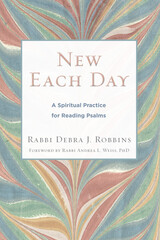
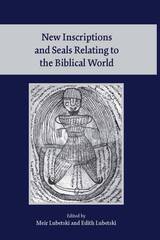
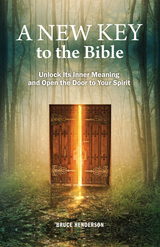
In his vast writings, eighteenth-century spiritual teacher Emanuel Swedenborg offers clarification: beneath the often-confusing literal text of the Bible is a clear inner meaning that directly points to an inclusive, always-loving, always-present God. In A New Key to the Bible: Unlock Its Inner Meaning and Open the Door to Your Spirit, author Bruce Henderson guides the reader through Swedenborg’s interpretation of the Bible, offering up a thought-provoking yet digestible way to understand the Creation story, as well as other famous parables such as Adam and Eve, Noah’s Ark, Abraham and Sarah, Moses, the life of Jesus, and the apocalyptic imagery of Revelation. At each step of the way, Henderson shows how these Scripture stories written thousands of years ago reflect our own spiritual paths and give meaning to the challenges we face along our journey in the present day.
For readers new to Swedenborg, A New Key to the Bible serves as an overview of the thousands of pages Swedenborg wrote about the inner meaning of the Bible. For spiritual seekers who feel a connection to the Bible but are sometimes troubled by its contents, Swedenborg reassures with a transcendent level of understanding about how God wants to inspire us through sacred text.

The New Testament lay at the center of Byzantine Christian thought and practice. But codices and rolls were neither the sole way—nor most important way—the Byzantines understood the New Testament. Lectionaries apportioned much of its contents over the course of the liturgical calendar; its narratives structured the experience of liturgical time and shaped the nature of Christian preaching, throughout Byzantine history. A successor to The Old Testament in Byzantium (2010), this book asks: What was the New Testament for Byzantine Christians? What of it was known, how, when, where, and by whom? How was this knowledge mediated through text, image, and rite? What was the place of these sacred texts in Byzantine arts, letters, and thought?
Authors draw upon the current state of textual scholarship and explore aspects of the New Testament, particularly as it was read, heard, imaged, and imagined in lectionaries, hymns, homilies, saints’ lives, and as it was illustrated in miniatures and monuments. Framing theological inquiry, ecclesiastical controversy, and political thought, the contributions here help develop our understanding of the New Testament and its varied reception over the long history of Byzantium.

Nineteenth-Century Women’s Movements and the Bible examines politically motivated women’s movements in the nineteenth century, including the legal, cultural, and ecclesiastical contexts of women. Focusing on the period beginning with the French Revolution in 1789 through the end of World War I in 1918, contributors explore the many ways that women’s lives were limited in both the public and domestic spheres. Essays consider the social, political, biblical, and theological factors that resulted in a multinational raising of awareness and emancipation for women in the nineteenth century and the strengthening of their international networks. The contributors include Angela Berlis, Kristin Kobes Du Mez, Ute Gerhard, Christiana de Groot, Arnfriður Guðmundsdóttir, Izaak J. de Hulster, Elisabeth Joris, Christine Lienemann-Perrin, Amanda Russell-Jones, Claudia Setzer, Aud V. Tønnessen, Adriana Valerio, and Royce M. Victor.
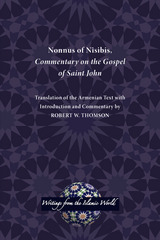
A new English translation of the first text translated from Arabic to Armenian for research and classroom use
Robert W. Thomson translates this ninth-century commentary defending the miaphysite theological position of the Armenian church against the chalcedonian position of the Greek Byzantine church. Nonnus’s exegesis of the gospel falls in the context of trends in Eastern Christian biblical exposition, primarily the Syrian tradition. Therefore, Thomson emphasizes the parallels in Syriac commentaries on the book of John, noting also earlier Greek writers whose works were influential in Syria. This book is essential reading for anyone interested in the Armenian church and church history.
Features:
- Introductory material on the text’s history, manuscript traditions, and theological importance
- Translation of the Armenian text and commentary
- Bibliography covering the Armenian, Greek, Syriac, and Arabic texts as well as secondary sources
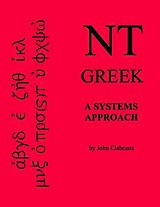
For many years now John Clabeaux has been perfecting his technique for teaching New Testament Greek—using his classrooms at St. John’s Seminary College, Harvard Divinity School, and the Pontifical College Josephinum as language laboratories. The comprehensive, meticulous, and user-friendly text NT Greek: A Systems Approach is the fruit of these efforts.
NT Greek is designed to be used both as a classroom text and as a reference manual for those students pursuing degrees in theological and biblical studies. The text includes a Greek index, an English index, a Greek-to-English glossary, verb maps, noun and adjective declension charts, and a list of helpful hints and rules. A digitally mastered CD of Greek recitations comes with every book to assist students with their pronunciations.
READERS
Browse our collection.
PUBLISHERS
See BiblioVault's publisher services.
STUDENT SERVICES
Files for college accessibility offices.
UChicago Accessibility Resources
home | accessibility | search | about | contact us
BiblioVault ® 2001 - 2024
The University of Chicago Press









